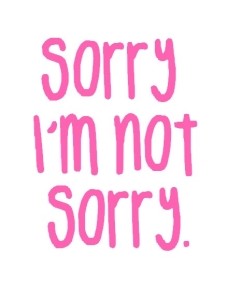Apps and platforms that tackle workplace bias in job search and recruitment
Tech is considered to be one of the least gender balanced sectors. Women are difficult to identify, attract and when that does happen, the churn levels are especially high. But it is also an area which is well placed to offer support to organisations wanting to monitor or highlight their own unconscious biases for gender and other workplace bias.
Some of the apps coming out of the tech sector offer ingenious ways to identify situations where workplace bias exist. It’s clear that although they all can’t tackle the bias directly – they do expose it and highlight it.
Apps and platforms that tackle workplace bias
Doxa
Doxascore.com is an online dating style site, with data driven tools to match women with companies that best fit them. Doxa helps women job seekers glean how various tech start-up companies treat their female employees. Using employee sourced survey data, the software develops a view what it is like to work at various companies, and how women fare in these workplaces. The profiles examine compensation, hours worked and schedules, pay gap, hours spend in meetings, the number of women on the leadership team and maternity-leave policies.
Entelo Diversity
This is a recruiting software which supports companies wanting to create more diverse teams by targeting specific demographics that are under represented in their current organisations. The algorithm reviews the online profiles of potential candidates—using data from Twitter, GitHub and other sites. “Since this information is layered on top of a candidate’s skills and qualifications, the solution provides a level of objectivity as it relates to your hiring practices. It also helps organizations demonstrate good faith efforts and comply with regulations”
FairyGodBoss
FairyGodboss is a data crowd sourcing platform to rank companies for the professional experiences and conditions they offer women. They have identified top industries for “gender equality, women’s job satisfaction, and the ones women would recommend to other women.” PR, Cosmetics and Hospitality are apparently the leading industries when it comes to women’s perceptions of gender equality at work. This gives women an opportunity to research organisations and make informed decisions based on comments of other women.
GapJumpers
GapJumpers is the “Voice” for business offering what they call blind auditions. The app offers companies a platform on which they can test the abilities of job applicants without knowing their gender or race , identifiers which lie at the root of bias. I would love to hear from anyone who has experienced this process to understand how it works in practise. Blind CVs tend not to deal with the real problem, simply defer it to late in the process. But they do get candidates through the first stages which is at least a step in the right direction.
Gender decoder Kat Matfield
Gender Decoder is an app similar to Textio, it highlights linguistic gender-coding which appears in job adverts and other documents. Research has shown that language cause women to self-deselect from applying for jobs that are advertised with masculine-coded language.This site is a quick way to check whether a job advert has the kind of subtle linguistic gender-coding that has this discouraging effect. It’s a free app and one that works well.
I’ve used it myself. My only comment would be that some of the words that are considered to be male coded such as “confident” and “business acumen” are more of a commentary on our culture. To replace with words which are considered to be “female” is simply patronising.
Gendertimer
Gendertimer is an app that monitors the amount of “meeting air time” participants take up. Here you can track who hogs the floor to create greater gender awareness in meetings and other social situations. Research shows that the dominant group is men! Users can manually record any speaker’s gender chart the data. This leads to self-regulation for any extroverts or “mansplainers” and the possibility of holding more inclusive meetings.
Includeed
I saw the pitch for this software diversity dashboard at an #HRTech conference in Paris 2015. Launching in 2016 Founder Sandrine Cina says “Includeed is an online platform which brings together employees, customers and companies around the topics of diversity and equal opportunities. Includeed allows employees and customers to review companies on their efforts towards equal opportunities, letting them know what is really needed and which solutions would be beneficial for all.”
InHerSight
Inhersight.com . Users rank their workplace across 14 criteria including maternity leave, salary satisfaction and wellness. The platform’s rating system is similar to sites such as Glassdoor, TripAdvisor Inc. and other crowd sourced feedback sites. It aggregate anonymous user-generated data to guide women to make “smarter decisions”.
Just not sorry
Just not sorry is a chrome extension app which produced an international furore in the sorry/not sorry debate. This is designed to help women neutralise their emails from “girl speak” along the lines of  “I’m sorry to disturb you, but I’m just trying to confirm our arrangements and could you possibly let me know your plans for xx. I know this is short notice but would you mind getting back to me by xx”
“I’m sorry to disturb you, but I’m just trying to confirm our arrangements and could you possibly let me know your plans for xx. I know this is short notice but would you mind getting back to me by xx”
My own view is that some women (and men) may find it helpful and emails should be succinct because no one will read them!
Textio
Textio is a spell check for job adverts, highlighting word choices that show gender bias or hackneyed phrases. It suggests alternative phrasing to stop self-de-selection by certain categories of job seekers. The program discourages corporate buzz words such as “ ninja” or “guru” which appeal to male applicants. Once again, my concern is words which are listed as male coded need to adapt with the culture rather than the other way around.
Unitive
Unitive leads to is a data driven hiring decisions and monitors job applicants and the hiring process, allowing hiring managers to visualize the information behind their decisions. The platform reminds hiring managers throughout the process when they are most likely to exhibit bias. This can be when drafting job descriptions, adverts, reviewing resumes or other written documents to recognize and avoid workplace bias. Candidates compete anonymously to solve problems related to the job.
What other apps or platforms would you recommend to tackle workplace bias? I would be happy to include them.
If your organisation needs unconscious bias training – contact me.







